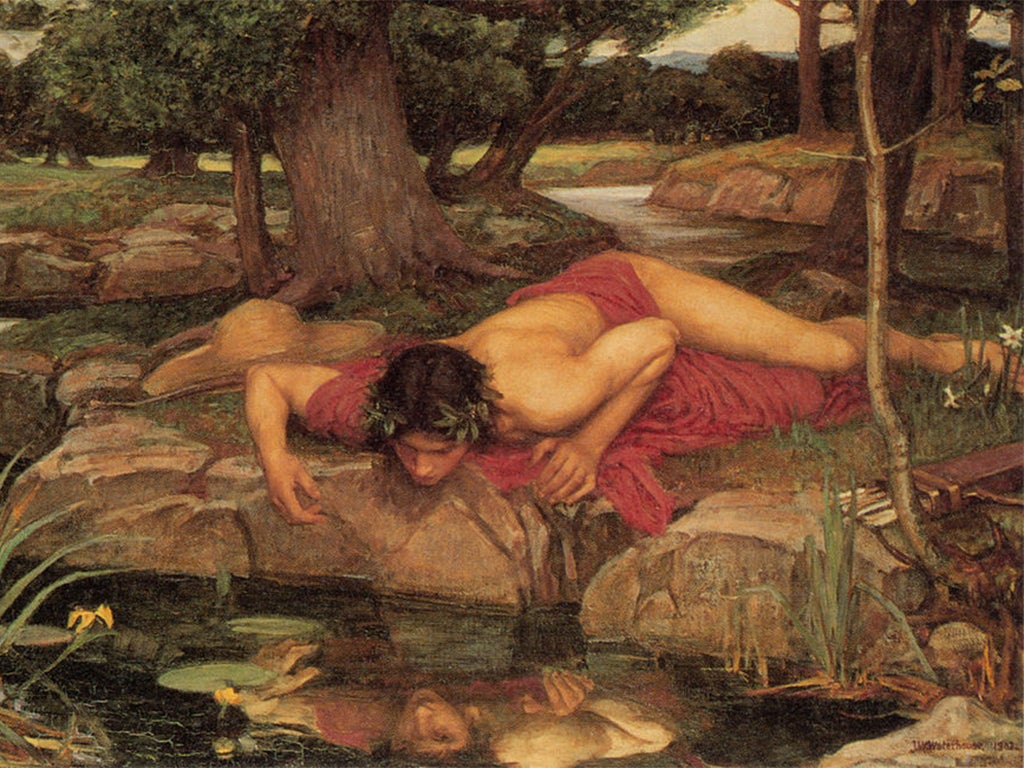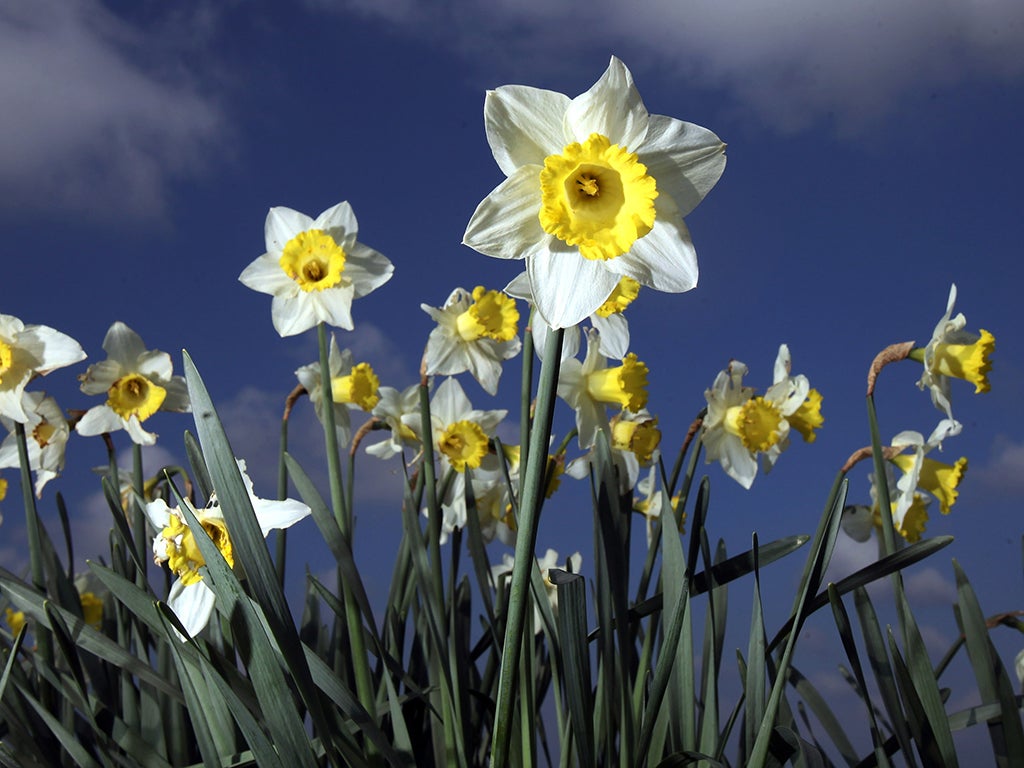Are we more narcissistic than ever before?
Selfies, social media and video challenges - society is becoming inundated with the me, myself and I

Your support helps us to tell the story
From reproductive rights to climate change to Big Tech, The Independent is on the ground when the story is developing. Whether it's investigating the financials of Elon Musk's pro-Trump PAC or producing our latest documentary, 'The A Word', which shines a light on the American women fighting for reproductive rights, we know how important it is to parse out the facts from the messaging.
At such a critical moment in US history, we need reporters on the ground. Your donation allows us to keep sending journalists to speak to both sides of the story.
The Independent is trusted by Americans across the entire political spectrum. And unlike many other quality news outlets, we choose not to lock Americans out of our reporting and analysis with paywalls. We believe quality journalism should be available to everyone, paid for by those who can afford it.
Your support makes all the difference.There was once a young man named Narcissus who was so vain that he fell in love with his own reflection in the water and died. In some versions of the mythological tale from Ancient Greece, Narcissus was transformed into a flower that today carries the name narcissus, or daffodil.
Like the flower, narcissism has continued to flourish in modern culture. “Selfie” was awarded word of the year in 2013 by the Oxford Dictionary. Capturing an image of oneself – once the purview of despondent artists – has become an international pastime. Even politicians rode the trend taking selfies at memorial services. Celebrities continued to be, well, celebrated as well. Miley Cyrus ended 2013 as the most searched person on Google, with Drake and Kim Kardashian coming in at the number two and three spots. Between them they have more “followers” than the population of an average country. And, as both Miley Cyrus’s career trajectory and research findings suggest, the importance of fame is more prominent than ever before.
In recent weeks, we’ve seen the Ice Bucket challenge thrive, but it has been revealed that less than half of people doing the challenge are actually donating. So, for some, is it really about awareness for ALS or self-promotion?
When we wrote The Narcissism Epidemic a few years ago we didn’t predict the extent of these changes. Narcissism has become such a part of culture that a new study found people could report their own narcissism simply by answering a question:
To what extent do you agree with this statement: "I am a narcissist." (Note: The word “narcissist” means egotistical, self-focused, and vain.)

But narcissism is more complicated – and confusing – than a single question can capture. There are really three types of narcissism. Problems arise when people discuss narcissism without identifying the form.
Grandiose narcissism is the outgoing, extraverted form. When you look at charismatic but corrupt leaders, unfaithful ex-partners or media hungry celebrities you are often seeing grandiose narcissism in action. Grandiose narcissism starts with is an inflated image of oneself. The narcissistic individual believes he or she is smarter, better looking and more important than others. And, of course, deserves special treatment for this fact. This does not mean that grandiose narcissists are all pompous bores. They can be very charming, likable (especially on first dates or job interviews) and enjoy people. On the flip side, narcissistic relationships are often not very emotionally warm or caring.

Here is the big catch with grandiose narcissism: If your image of yourself and reality do not match, you have to fill in the gaps. That is, you have to make yourself look better than you are. So, you might spend time with popular people who boost your image. Or you might name drop or show-off. There is a running joke that the most dangerous place in the world is between certain politicians and a camera crew. If you are talented and narcissistic you might be able to attract a posse to follow you or an attractive “trophy” partner. Online this might take the form of followers or friends – research has found that grandiose narcissism predicts the number of Twitter followers, Klout score and Facebook friends a person has.
If you have money (or can get loans – debt is a narcissism enabler) you can sport fancy clothes or a car. You can even enhance your physical appearance. This is easy to do with online photos. You just take several and pick the best one then use various filters to make it even better. In real life, this same feat can be accomplished with make-up, facial hair, grooming and even cosmetic surgery. Reality always wins, but illusion can put up a good fight.

When we measure grandiose narcissism for research we typically use personality tests. The most popular of these, the Narcissistic Personality Inventory, has items like:
- I am apt to show off if I get the chance.
- I like to look at myself in the mirror.
- If I ruled the world it would be a much better place.
Vulnerable narcissism is the second flavour of narcissism. It is harder to see than grandiose narcissism. Vulnerable narcissists think they are entitled to special treatment and greatness but actually have low self-esteem and are not typically extraverted. Imagine someone living in his mum’s attic. He spends his evenings watching X Factor believing he should be the next celebrity singing act. Unfortunately, he lacks the confidence to do it and instead becomes an internet troll. This way he can display his expertise without the risk of criticism or failure.
Here are a couple items from the Hypersensitive Narcissism Scale (HSNS) that we use to measure vulnerable narcissism:
- My feelings are easily hurt by ridicule or the slighting remarks of others.
- I am secretly "put out" or annoyed when other people come to me with their troubles, asking me for my time and sympathy.
Like most personality traits, these two forms of narcissism have different levels. Most people are in the middle and there are some people who are higher and lower. Colloquially people who have high levels of narcissism are called “narcissists” in the same way people with high levels of introversion are called “introverts”. But the reality is that no bright line separates the highs from the lows.
The third form of narcissism occurs when narcissism is extreme and causes clinically significant problems in a person’s life – marriages fall apart, friends are lost, a career gets derailed. When this occurs narcissism can be diagnosed as a personality disorder, narcissistic personality disorder (also known as NPD). NPD contains a mix of both grandiose and vulnerable narcissism, but researchers are still debating the ideal grandiose/vulnerable ratio. Part of the issue is where you find the NPD. In business settings grandiosity stands out as a problem more, but in mental health clinics vulnerability seems more common.

Can you change narcissism or NPD? There is no simple answer to this. For grandiose narcissism, my usual formula is CPR. Practice caring and compassion; do what you are passionate about rather than what gets you attention; and take responsibility for your mistakes as well as successes. For vulnerable narcissism I would supplement this list with practices that reduce depression and anxiety. Cultivate a sense of belonging or a friendship network; engage in physical exercise; or practice a form of meditation.
For NPD, there is no single, scientifically verified treatment of choice. Instead, we have limited evidence that many treatments work. These include cognitive behavioral therapies, mindfulness based therapies, psychodynamic therapies, and therapies like schema therapy that draw from multiple traditions. But there are two caveats. First, people with NPD are often unwilling to enter treatment because in their mind they do not have a problem – everyone else does. Second, it is challenging for clinicians to keep individuals with NPD in treatment.
Narcissism is increasing, notably in the form of grandiose narcissism and NPD. About two thirds of college students in America in the 2000’s had narcissism scores higher than the average student in the 1980’s, and the lifetime rate of NPD symptoms in young people is about three times higher than in seniors. Still, I remain optimistic that people can change if they are motivated, have the right tools, and know what type of narcissism they are dealing with.
W. Keith Campbell, Ph.D. is a professor at the University of Georgia. More information on his research and books can be found at wkeithcampbell.com
Join our commenting forum
Join thought-provoking conversations, follow other Independent readers and see their replies
Comments